Planning your own book?
Or have you already written one and now want to have it printed and bound? Here are a few tips for a satisfying result:
1. Paper
The easiest way is to prepare books for a so-called adhesive binding. There is one simple rule: the thinner the paper (low grammage - e.g. 80g - the most frequently used quality for printing and copying papers), the more durable is the adhesive binding. The thicker the paper, the less the pages bend, which considerably affects the durability of the adhesive binding. The bookbinder doesn’t mind if the paper is translucent. A little hint regarding paper colour: Don't use pure white paper. Books always have a slightly tinted paper to make the contrast more pleasant for the eye.
2. Format
Print your manuscript single-paged or double-paged. If you are planning to use the A4 portrait format there is the advantage that A4 bindings come at good value for money. However, if you wish to use a different format, please note: In the case of a hand-made adhesive binding, the paper must have a certain grain direction. With copy paper and all other A4 cuts, the longer side takes glue better than the short one. The grain direction (that is the arrangement of the fibres in the paper) must always be parallel to the spine of the book. So if you want a different format, always print A4 portrait format (even if paper is wasted). Unfortunately, the commercial A5 paper has the wrong grain direction. With landscape formats therefore always is the problem that during adhesive binding the paper swells up a lot in the joint due to moisture and forms unattractive curls.
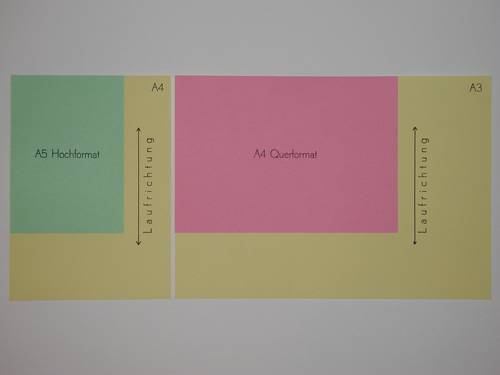
Correct positioning for special formats
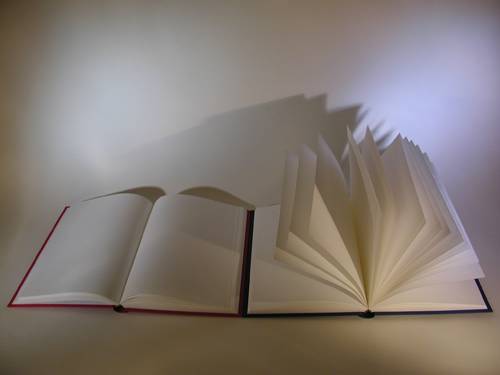
Correct grain direction - wrong grain direction
3. Images and pictures
Do not stick photos or other illustrations on the manuscript pages. During the process of binding a book is put into the press again and again in various steps. Raised parts press themselves clearly visible onto the pages in front and behind. It is better to scan such images, copy and paste them into the manuscript. If you are planning a book with different people designing individual pages, it is usually unavoidable that all sorts of things are glued on the pages. Try to prevent this. Books that cannot be pressed are usually unsightly. They cannot be trimmed, and one has to glue compensating strips to even out differences in level in the joint (leave 5 mm free on the left edge). This is time-consuming and therefore much more expensive than a simple adhesive binding.
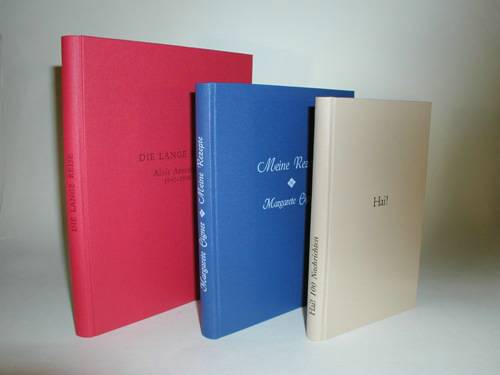
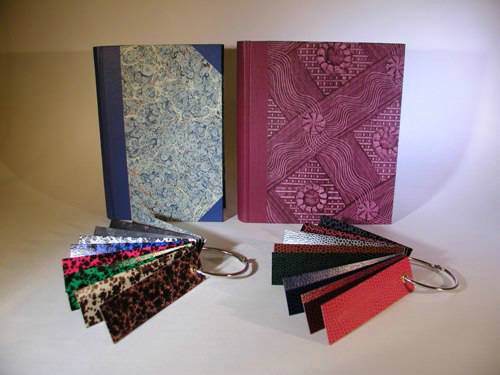
4. Cover design
There are many solutions for the cover. You can get a full cloth binding with a front embossing or a half bound binding with a coloured paper of your choice. The selection of fabric and paper is extensive. If you want to provide your own paper, it must be of high quality and slightly larger than the final size of your book, as it has to be wrapped around the edges. We don’t produce foil-wrapped cardboard volumes. Concerning the front embossing there is a selection of different fonts. It is helpful to create a draft on the computer and print it out so that a similar font can be selected from our collection of typefaces. You can also choose the colour of the embossing.
5. Timeframe
The completion of a book with adhesive binding takes approximately one week, depending on the design and number of copies.
6. Price
You will find prices for A4 portrait format on the page „Theses for a degree“, prices for special formats under points 8 and 10.
Your analogue archive
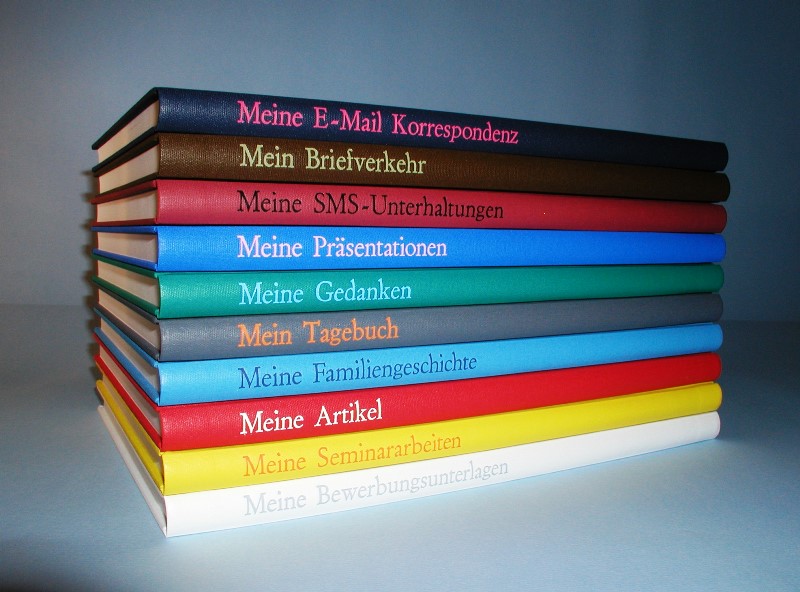
In our digital age it unfortunately happens time and again that we lose data or whole texts stored in our computers.
For more than a thousand years, however, there has been an unbeatable reliable data carrier that is common to most cultures:
The Book
The possibility to secure data in this way is very simple and we want to remind you of this form of archiving. Safeguard your digital world. Make the buzzing data comprehensible and graspable. Create your own personal private archive!
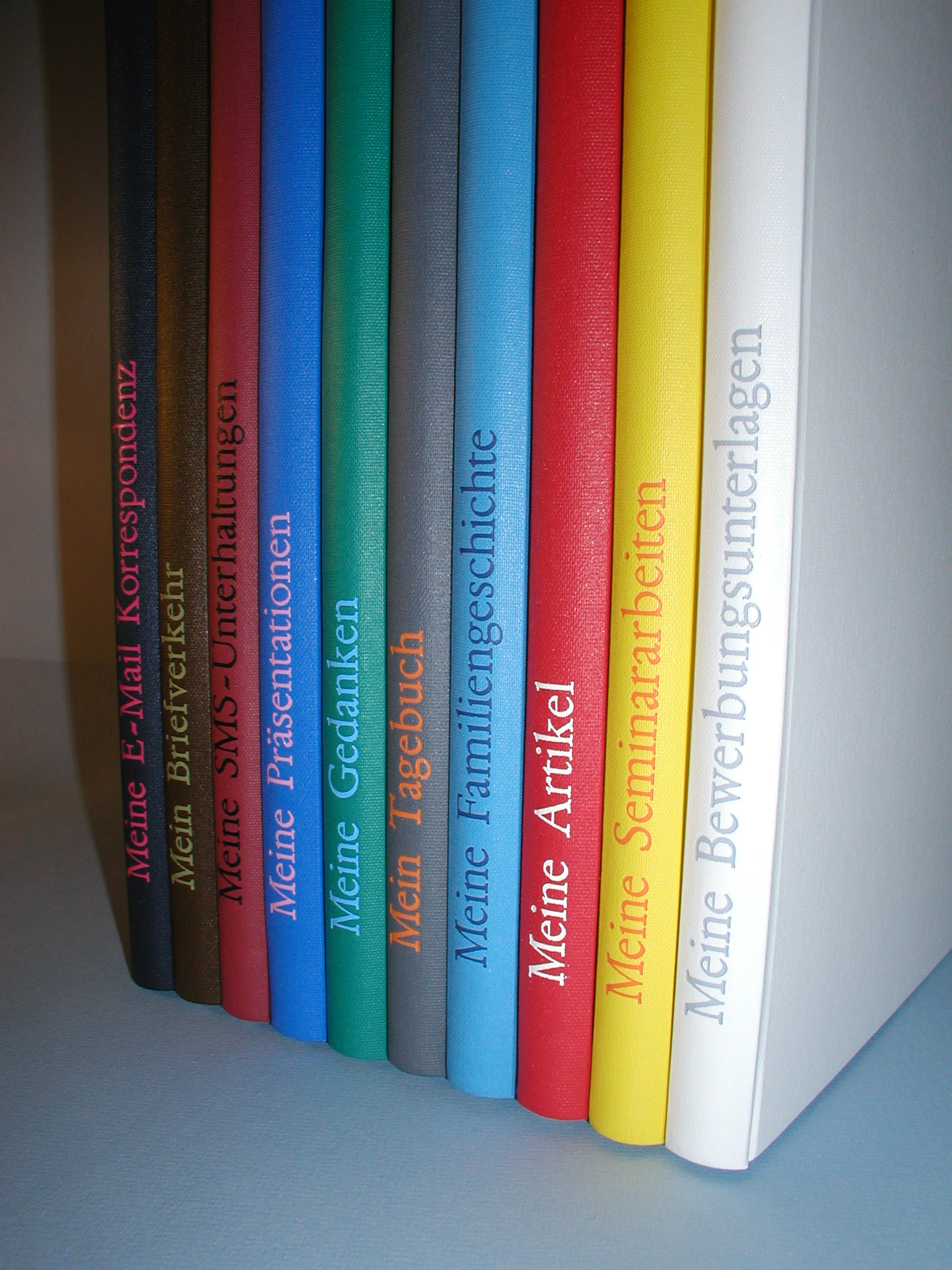
If you stick to some simple basic rules (listed under the button "Theses for a degree") we can offer you this inexpensive and nevertheless high-quality method of archiving your data at the reasonable price of a bound thesis.
The possibilities in design are endless, and you can choose among other things different colours and different fonts for embossing.